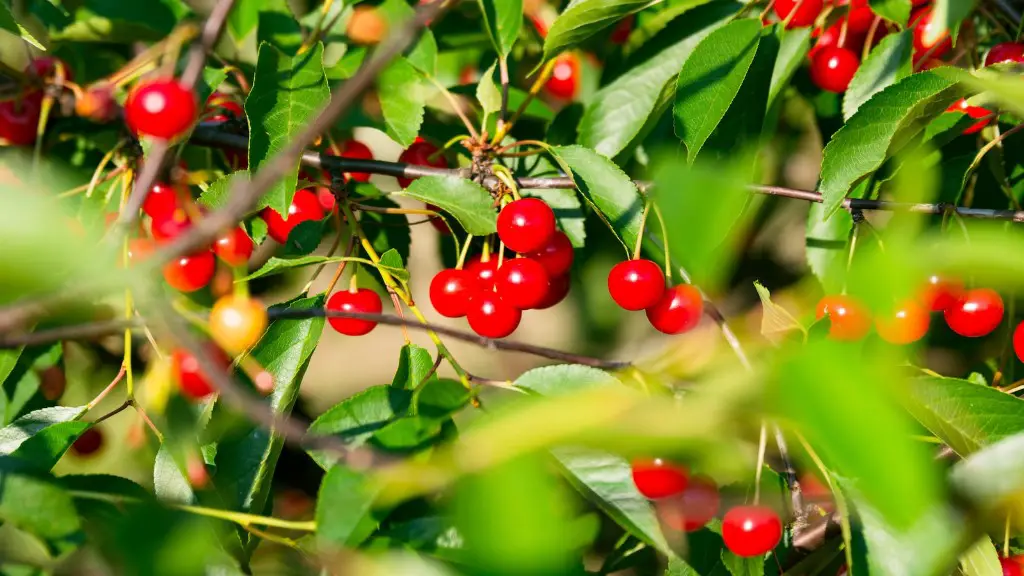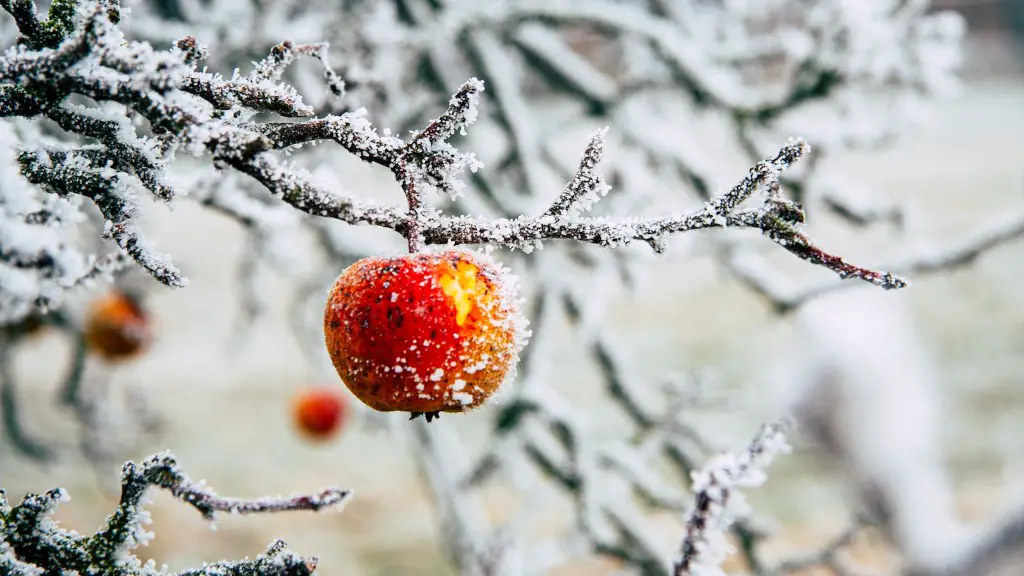Aphids are common garden pests that are often seen on cherry trees. They can cause yellowing of the leaves, distortion of buds, and even premature defoliation. Even though these pesky pests can cause a great deal of damage, they can also be easily treated with minimal effort. Here are some ways to help protect your cherry tree from aphids.
The first step to eliminating aphids is to avoid them altogether. Keeping your garden and surrounding area neat is an effective way to limit their presence. This can be done by regularly inspecting trees and removing any dropped leaves or infected branches. Additionally, using barriers like nets or insecticidal sprays around the base of the tree can act as a deterrent for the pest.
If you’re already dealing with an aphid infestation, a mix of insecticides and homemade concoctions is a good place to start. Insecticidal soap, neem oil, and horticultural oil are all effective solutions for reducing aphid numbers. Be sure to read the instructions carefully and apply the insecticides correctly to get the best results.
If you would like to skip the insecticides, there are many natural remedies that can be used. A solution of water and dish soap can be sprayed onto the leaves and branches, which will smother the aphids. Additionally, introducing beneficial insects into the environment will help to naturally control their presence. These can include ladybugs, lacewings, and hoverflies.
In addition to using natural predators, removing infected branches and leaves is a great way to reduce the aphid population. These limbs and leaves should be disposed of right away, as they may have eggs attached that could result in a relapse of the infestation.
Overall, treating aphids on a cherry tree can be a daunting task. Regular inspection and implementation of organic solutions is the key to a successful pest control strategy. Being proactive with treating and preventing an aphid infestation will help keep your cherry tree healthy all season.
Incorporating Natural Predators
Introducing natural predators is one of the best ways to address a looming aphid infestation. This will help to keep the population down and ensure a healthy environment for your cherry tree. Some effective natural predators in this situation include ladybugs, lacewings, hoverflies, mealybug destroyers and minute pirate bugs. Utilizing these predators is especially helpful when combined with other treatments, such as the removal of infected branches.
It’s important to release the predators correctly, which will both increase effectiveness and minimize the risk of further infestation. Pay attention to the labels on the container and follow the instructions accordingly. Additionally, don’t overdo it, since having too many predators can actually be detrimental to the environment, resulting in a disruption of the natural ecosystem.
Insecticidal Sprays
For serious infestations, insecticidal sprays may be necessary. These sprays are designed to eradicate existing pest populations, while also serving as a repulsion for future infestations. Insecticides come in various forms, including chemical, organic, and all-natural varieties. Different formulations will target different types of pests, so be sure to read the label and pick the correct product.
Using an insecticidal spray is quite simple — all you have to do is attach the nozzle to a hose, spray the tree’s foliage liberally, and rinse off any excess. Be sure to apply the product only in cool weather and in the early morning or late evening, when the sun isn’t too bright. Additionally, try not to apply the spray when windy, as this can result in drift and the accidental poisoning of beneficial insects.
Insecticidal Soap
Insecticidal soap is another effective remedy for aphids, as it is specifically designed to target small pest populations without causing harm to larger organisms. The active ingredient in insecticidal soap is Potassium Salts of Fatty Acids, which can deter and kill pests such as aphids, mites, whitefly, and mealybugs. As an added bonus, this soap is non-toxic and safe for use around pets and children.
The application process of insecticidal soap is different from other insecticides, in that a undiluted solution must be sprayed on the affected areas. It’s important to thoroughly coat the plant’s foliage, including the underside of the leaves and the branches. Typically, the soap solution should be reapplied every five to seven days in order to completely eradicate the aphid population.
Neem Oil
Neem oil is a natural product that can be used to help eliminate aphid infestations. This oil is made from the fruit and seeds of the neem tree, and contains a variety of beneficial compounds that are beneficial for plant health. In fact, neem oil has been used for centuries as an effective insect-repellant.
The application process for neem oil is relatively simple. It should be mixed with water, and a few drops of dish soap, then sprayed liberally onto the trees leaves and stems. This oil has a strong odor and may cause skin irritation if it is not applied properly, so it’s important to read the directions carefully and wear protective clothing when handling the mixture.
Horticultural Oil
Horticultural oil is a petroleum-based insecticide that is used to control various pests, including aphids. It works by smothering the pests and suffocating them, which helps to reduce the population size quickly. This oil is especially effective when used in conjunction with other treatments, such as insecticidal soap.
Using horticultural oil is quite simple, as it only requires a hose and a few drops of dish soap. Attach the nozzle to the hose and mix the ingredients in a bucket, then spray the mixture on to the affected branches and leaves. Be sure to thoroughly coat all areas of the tree for the best results, and reapply if necessary.
Removing Infected Branches and Leaves
Removing any infected branches and leaves is an effective way of controlling an aphid population. These affected areas can harbor a large number of eggs, which can result in a relapse of the infestation. Therefore, it’s important to remove these branches and leaves as soon as they are spotted.
In order to remove these branches and leaves, it’s important to use pruning shears or an electric hedge trimmer. This can be done by snipping off the affected areas, being sure to discard the branches and leaves right away. Additionally, it’s important to use sterilized tools to prevent the spread of bacteria and fungal diseases.
Regular Inspection
Finally, regular inspection of your cherry tree is essential to keeping aphids at bay. This process can be done by simply looking for common signs of an infestation, such as yellowing leaves, distorted buds, and premature defoliation. Paying close attention to these signs can help you to detect an infestation before it becomes out of control.
In addition to visual inspection, it’s also important to check the tree’s roots for potential pests. This can be done by digging up a small patch of soil and examining it for signs of pests, such as larvae or egg sacs. If any pests are found, be sure to take the necessary steps to make sure that the infestation is dealt with quickly.




